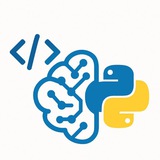ChatGPT cheat sheet for data science.pdf
29 MB
Title: ChatGPT Cheat Sheet for Data Science (2025)
Source: DataCamp
Description:
This comprehensive cheat sheet serves as an essential guide for leveraging ChatGPT in data science workflows. Designed for both beginners and seasoned practitioners, it provides actionable prompts, code examples, and best practices to streamline tasks such as data generation, analysis, modeling, and automation. Key features include:
- Code Generation: Scripts for creating sample datasets in Python using Pandas and NumPy (e.g., generating tables with primary keys, names, ages, and salaries) .
- Data Analysis: Techniques for exploratory data analysis (EDA), hypothesis testing, and predictive modeling, including visualization recommendations (bar charts, line graphs) and statistical methods .
- Machine Learning: Guidance on algorithm selection, hyperparameter tuning, and model interpretation, with examples tailored for Python and SQL .
- NLP Applications: Tools for text classification, sentiment analysis, and named entity recognition, leveraging ChatGPT’s natural language processing capabilities .
- Workflow Automation: Strategies for automating repetitive tasks like data cleaning (handling duplicates, missing values) and report generation .
The guide also addresses ChatGPT’s limitations, such as potential biases and hallucinations, while emphasizing best practices for iterative prompting and verification . Updated for 2025, it integrates the latest advancements in AI-assisted data science, making it a must-have resource for efficient, conversational-driven analytics.
Tags:
#ChatGPT #DataScience #CheatSheet #2025Edition #DataCamp #Python #MachineLearning #DataAnalysis #Automation #NLP #SQL
https://t.iss.one/CodeProgrammer⭐️
Source: DataCamp
Description:
This comprehensive cheat sheet serves as an essential guide for leveraging ChatGPT in data science workflows. Designed for both beginners and seasoned practitioners, it provides actionable prompts, code examples, and best practices to streamline tasks such as data generation, analysis, modeling, and automation. Key features include:
- Code Generation: Scripts for creating sample datasets in Python using Pandas and NumPy (e.g., generating tables with primary keys, names, ages, and salaries) .
- Data Analysis: Techniques for exploratory data analysis (EDA), hypothesis testing, and predictive modeling, including visualization recommendations (bar charts, line graphs) and statistical methods .
- Machine Learning: Guidance on algorithm selection, hyperparameter tuning, and model interpretation, with examples tailored for Python and SQL .
- NLP Applications: Tools for text classification, sentiment analysis, and named entity recognition, leveraging ChatGPT’s natural language processing capabilities .
- Workflow Automation: Strategies for automating repetitive tasks like data cleaning (handling duplicates, missing values) and report generation .
The guide also addresses ChatGPT’s limitations, such as potential biases and hallucinations, while emphasizing best practices for iterative prompting and verification . Updated for 2025, it integrates the latest advancements in AI-assisted data science, making it a must-have resource for efficient, conversational-driven analytics.
Tags:
#ChatGPT #DataScience #CheatSheet #2025Edition #DataCamp #Python #MachineLearning #DataAnalysis #Automation #NLP #SQL
https://t.iss.one/CodeProgrammer
Please open Telegram to view this post
VIEW IN TELEGRAM
👍14❤6💯2
The Big Book of Large Language Models by Damien Benveniste
✅ Chapters:
1⃣ Introduction
🔢 Language Models Before Transformers
🔢 Attention Is All You Need: The Original Transformer Architecture
🔢 A More Modern Approach To The Transformer Architecture
🔢 Multi-modal Large Language Models
🔢 Transformers Beyond Language Models
🔢 Non-Transformer Language Models
🔢 How LLMs Generate Text
🔢 From Words To Tokens
1⃣ 0⃣ Training LLMs to Follow Instructions
1⃣ 1⃣ Scaling Model Training
1⃣ 🔢 Fine-Tuning LLMs
1⃣ 🔢 Deploying LLMs
Read it: https://book.theaiedge.io/
Read it: https://book.theaiedge.io/
#ArtificialIntelligence #AI #MachineLearning #LargeLanguageModels #LLMs #DeepLearning #NLP #NaturalLanguageProcessing #AIResearch #TechBooks #AIApplications #DataScience #FutureOfAI #AIEducation #LearnAI #TechInnovation #AIethics #GPT #BERT #T5 #AIBook #AIEnthusiast
https://t.iss.one/CodeProgrammer
Please open Telegram to view this post
VIEW IN TELEGRAM
👍17❤4👎1
👨🏻💻 If you want to become a data science professional, follow this path! I've prepared a complete roadmap with the best free resources where you can learn the essential skills in this field.
